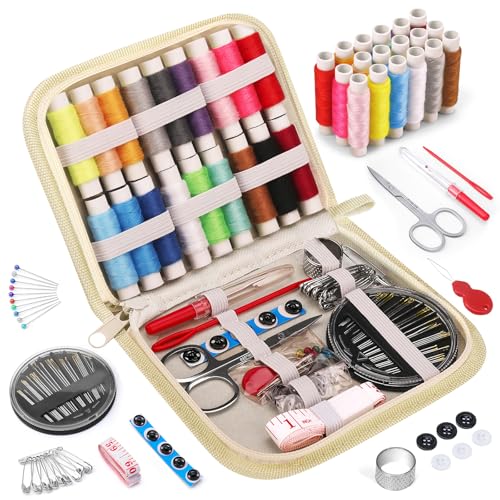Do you love sewing and want to make a difference in your community? Sewing for a cause lets you use your skills to support those around you. From creating warm blankets for shelters to designing clothing for local charities, your creativity can have a big impact.
Imagine organizing a sewing circle where everyone contributes to a common goal or hosting workshops to teach others the art of stitching while raising funds for a good cause. These community projects not only help those in need but also bring people together, fostering a sense of unity and purpose. Dive into these inspiring ideas and discover how your passion for sewing can transform lives around you.
Benefits Of Sewing For Community Causes
Engaging in sewing projects for community causes offers numerous advantages. You contribute to meaningful initiatives while enhancing your own skills and connections.
Building Community Connections
Sewing for community causes fosters strong local networks. Organizing group projects brings together diverse individuals, creating a supportive environment. Participating in workshops and sewing circles encourages collaboration, leading to lasting friendships. Volunteering your time and talents strengthens bonds within your neighborhood, promoting a sense of belonging.
Promoting Sustainable Practices
Sewing initiatives support environmentally friendly efforts. Recycling fabric scraps reduces waste, contributing to a greener planet. Creating durable, handmade items minimizes reliance on mass-produced goods, lowering your carbon footprint. By choosing sustainable materials and methods, you advocate for responsible consumption and production, encouraging others to adopt eco-friendly habits.
Popular Sewing Projects
Explore various sewing initiatives that make a difference in your community. Choose projects that align with your skills and the needs of those you aim to support.
Clothing Donations
Create and donate garments to local shelters and charities. Sewing warm coats, blankets, and everyday clothing ensures those in need receive essential items. Organize donation drives to collect and distribute your handmade clothing effectively.
Quilts For Hospitals
Design and assemble quilts for patients in hospitals. Handmade quilts provide comfort and a personal touch to hospital rooms. Collaborate with local hospitals to understand their requirements and ensure timely delivery of these comforting creations.
Accessories For Charity Auctions
Craft accessories such as scarves, hats, and bags for charity auctions. These items raise funds for various causes while showcasing your craftsmanship. Partner with charitable organizations to maximize the impact and reach of your auction items.
Starting A Sewing Project
Begin your sewing journey by laying a solid foundation with careful planning and organization. Selecting the right cause ensures your efforts make the most significant impact.
Planning And Organization
- Define Your Goals
- Determine the specific outcomes you aim to achieve, such as providing warm clothing or creating supportive community spaces.
- Gather Materials
- List necessary supplies, including fabrics, needles, threads, and sewing machines, to ensure you have everything needed before starting.
- Create a Timeline
- Establish a schedule with clear deadlines for each phase of your project to keep progress on track.
- Assemble a Team
- Recruit volunteers or collaborators with complementary skills to enhance efficiency and creativity.
- Identify Resources
- Locate local organizations, workshops, or funding sources that can support your project’s success.
Choosing A Cause
- Assess Community Needs
- Research local issues, such as homelessness or education gaps, to identify where your sewing skills can make the most difference.
- Align With Your Skills
- Select a cause that matches your expertise, whether it’s quilting for comfort or crafting garments for those in need.
- Partner With Local Organizations
- Collaborate with charities, shelters, or schools to ensure your project addresses real needs and gains broader support.
- Evaluate Impact Potential
- Consider the long-term benefits of each cause, focusing on initiatives that offer sustainable and meaningful change to the community.
Essential Supplies And Tools
Having the right supplies and tools sets you up for successful community sewing projects. Equip yourself efficiently to maximize your impact.
Basic Sewing Kits
A well-stocked sewing kit ensures you’re prepared for any project. Include these essentials:
- Sewing Machine: Choose a reliable model with multiple stitch options.
- Thread Set: Select a variety of colors to match different fabrics.
- Scissors: Invest in fabric scissors and a smaller pair for detailed work.
- Measuring Tools: Use tape measures, rulers, and seam gauges for accuracy.
- Pins and Needles: Keep a selection of pins, needles, and safety pins on hand.
- Cutting Tools: Include rotary cutters and cutting mats for precise fabric cutting.
- Sewing Machine Accessories: Have extra bobbins, presser feet, and a sewing kit for repairs.
Materials Sourcing
Access to quality materials is crucial for impactful projects. Consider these sourcing strategies:
- Donations: Reach out to local businesses and community members for fabric and supplies.
- Wholesale Suppliers: Purchase materials in bulk to reduce costs.
- Recycled Fabrics: Use fabric scraps and repurpose old clothing to promote sustainability.
- Local Fabric Stores: Support local businesses by sourcing materials nearby.
- Online Marketplaces: Find unique fabrics and tools through reputable online retailers.
- Partnerships: Collaborate with organizations to secure steady material donations for ongoing projects.
By organizing your supplies and sourcing materials effectively, you streamline your sewing efforts and enhance the quality of your community projects.

Engaging Volunteers
Mobilizing volunteers is crucial for the success of your sewing projects. Effective strategies ensure you attract and retain dedicated individuals.
Recruitment Strategies
Identify target audiences by reaching out to local sewing groups, community centers, and online platforms. Utilize social media campaigns on Facebook and Instagram to promote your cause. Collaborate with schools and universities to engage students interested in crafts. Host informational sessions at libraries and coffee shops to attract diverse participants. Offer incentives such as recognition in newsletters or certificates of appreciation to motivate potential volunteers.
Providing Training And Support
Organize workshops to teach essential sewing techniques and project-specific skills. Develop comprehensive guides and video tutorials for reference. Assign experienced volunteers as mentors to new members, fostering a supportive environment. Schedule regular check-ins to address questions and provide feedback. Supply necessary materials and resources to ensure volunteers can contribute effectively. Create a welcoming atmosphere that encourages collaboration and continuous learning.
Success Stories
Discover how sewing projects transform communities and inspire change through dedicated efforts.
Local Initiatives
Local sewing initiatives demonstrate the power of community collaboration. Examples include:
- Blanket Drives: Collecting unused fabric to create warm blankets for homeless shelters.
- Clothing Donations: Tailoring garments for local charities, ensuring they meet specific needs like sizes and styles.
- Quilt Projects: Designing quilts for hospital patients, providing comfort and a sense of home.
- Accessory Crafting: Creating bags and scarves for charity auctions, raising funds for various causes.
- Workshops and Classes: Hosting free sewing classes to empower individuals with new skills and foster community bonds.
« The Untold Story of How Sewing Became a Global Craft
Say Goodbye to Uneven Stitches: Essential Machine Adjustments You Need Now »
These projects not only address immediate needs but also build stronger, more cohesive neighborhoods.
Large-Scale Campaigns
Large-scale sewing campaigns achieve significant impact through widespread participation and resources. Notable campaigns include:
- National Quilt Initiatives: Coordinating quilt-making efforts across multiple states to support disaster relief funds.
- Corporate Partnerships: Collaborating with businesses to sponsor sewing projects, providing materials and volunteer support.
- Annual Fundraisers: Organizing large events where thousands contribute by sewing items, generating substantial donations for nonprofits.
- International Aid Programs: Partnering with global organizations to deliver sewing-made goods to communities affected by crises.
- Mass Donation Drives: Launching nationwide campaigns to collect and distribute essential items like masks and gowns during health emergencies.
These comprehensive efforts mobilize extensive resources and volunteers, maximizing the reach and effectiveness of sewing for a cause.
Overcoming Challenges
Engaging in community sewing projects brings rewarding outcomes, yet challenges may arise. Addressing these obstacles ensures your initiatives remain effective and sustainable.
Managing Resources
Efficient resource management enhances project success. Allocate funds by setting a budget, tracking expenses, and prioritizing essential materials. Source fabrics through donations, wholesale suppliers, or recycled materials to minimize costs. Organize your workspace by categorizing tools and maintaining inventory lists, ensuring you always have necessary supplies on hand. Collaborate with local businesses for material donations or discounts, expanding your resource pool without increasing expenses.

Maintaining Motivation
Sustaining volunteer enthusiasm drives project continuity. Set clear, achievable goals to provide direction and a sense of accomplishment. Recognize and celebrate milestones, offering appreciation through thank-you notes or small rewards to boost morale. Foster a supportive community by encouraging open communication and teamwork, creating an environment where volunteers feel valued and connected. Introduce variety in projects to keep tasks interesting and prevent burnout, ensuring long-term participation and commitment.
Conclusion
Embracing sewing for a cause lets you make a real difference right in your community. It’s a wonderful way to share your talents, connect with others, and support those in need. Whether you’re crafting a cozy blanket or designing unique clothing, each stitch contributes to something meaningful. Getting involved not only helps others but also brings a sense of fulfillment and belonging. So grab your sewing kit and start your journey of creating positive change. Your efforts can spark inspiration and strengthen the bonds that make your community thrive.
















